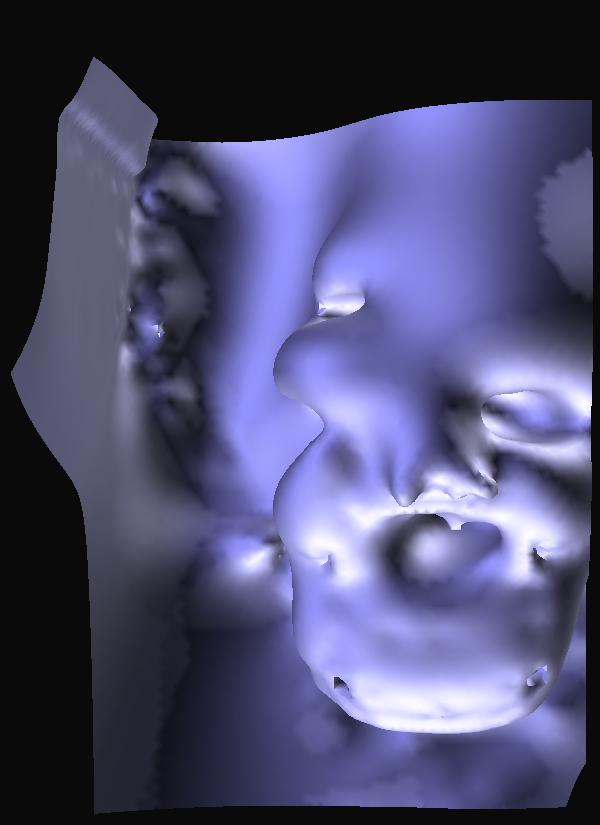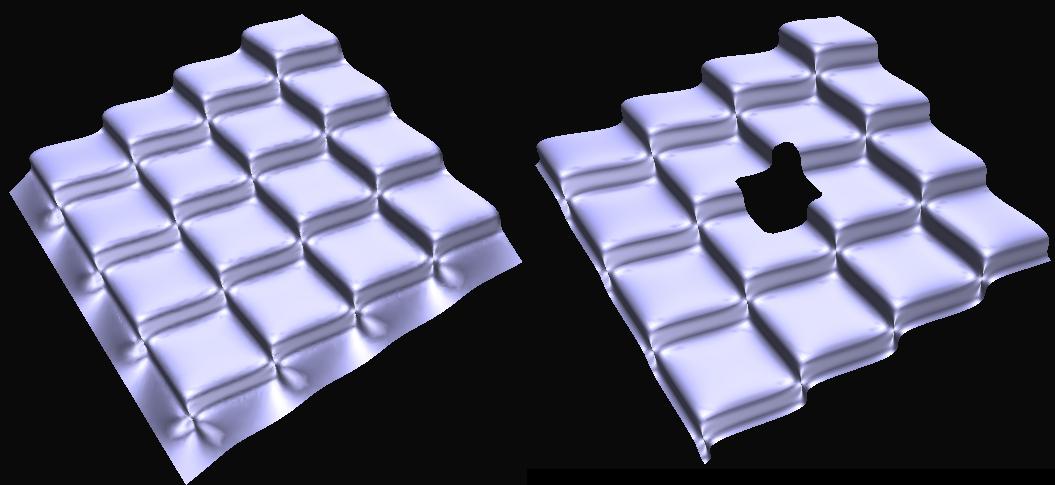
The surface mesh on the right has been completely repaired, with the addition of some artifacts.
(Click here to see more of this object.)

The surface mesh on the right has been completely repaired, with the
addition of some artifacts.
(Click here to see more of this object.)
However, on data with larger holes, or sharper edges, we begin to see problems.
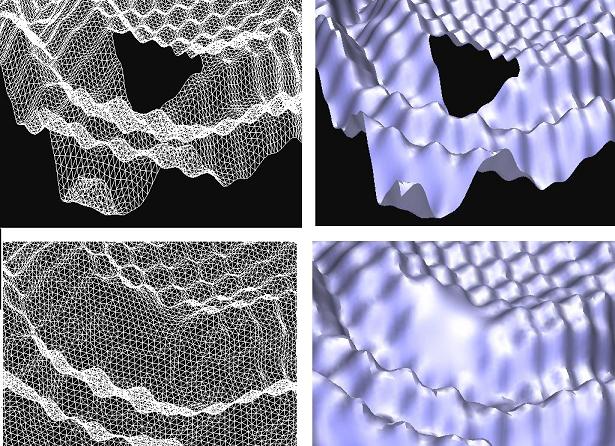
Above, you see on the top row: A surface with a large hole rendered
as wireframe and solid.
On the bottom row: The repaired surface, in wireframe and solid.
(Click here to see more of this object.)
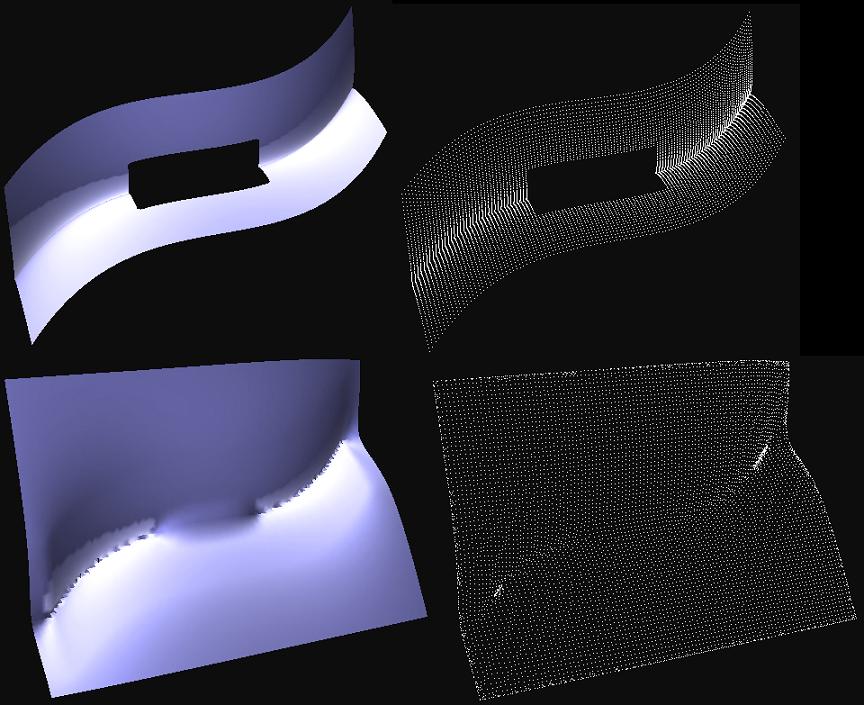
This is an example surface with a sharp edge. The top row again
is the unrepaired surface, rendered as both points and solid. On
the bottom
row we see the unsuccessful repair attempt. The repair lost the
sharpness of the edge.
Now, real world data is much more noisy than the above perfect data.
Below is a piece of a VW car, with some extraneous information. The
point of applying the mesh repair software to it was to see the mesh
repair of the headlights and emblem on the front hood of the car.
It is
discouraging that the hood loses so much definition. Yet how
the headlights and emblem are covered up is encouraging. We may want to
perform this sort of surface repair, but applying it only to specific
areas around a hole, so that detail elsewhere on the object isn't affected.
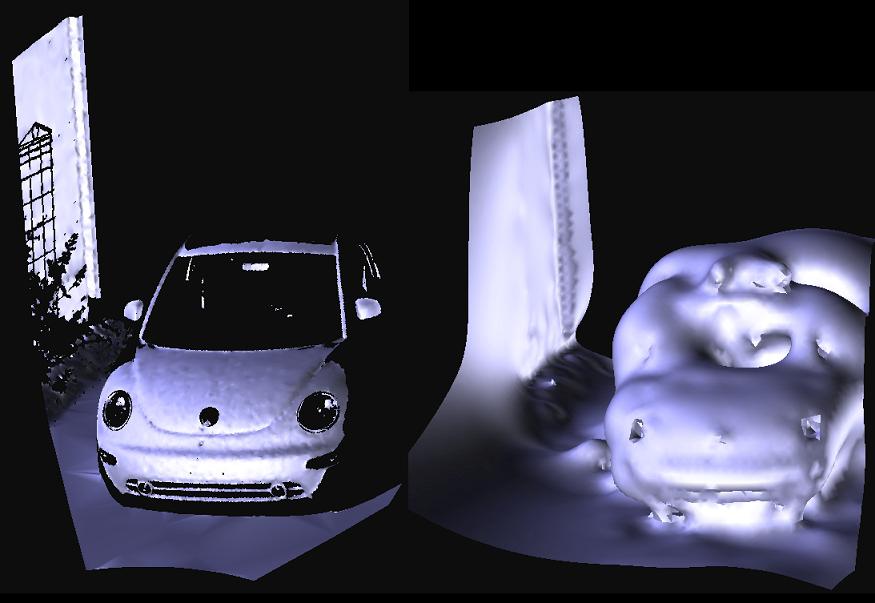
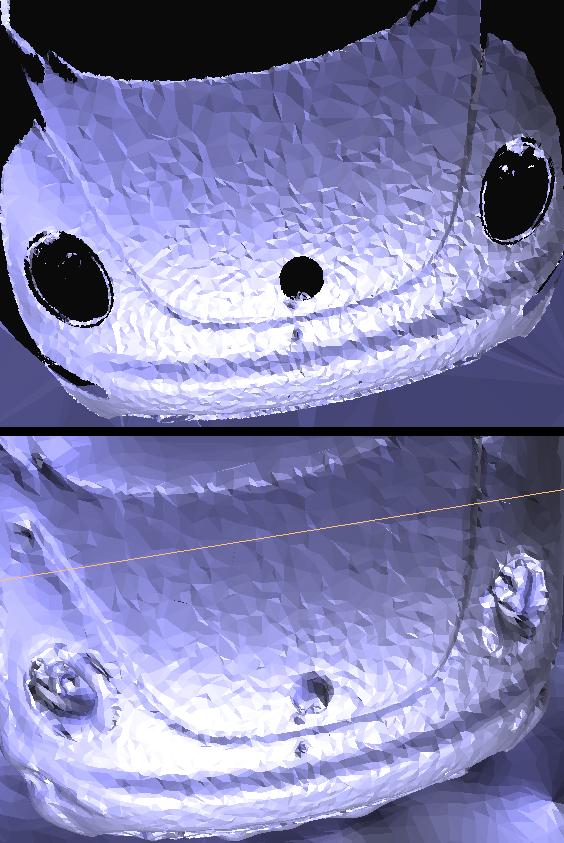 about as good as it gets.
(no smoothing)
about as good as it gets.
(no smoothing)
